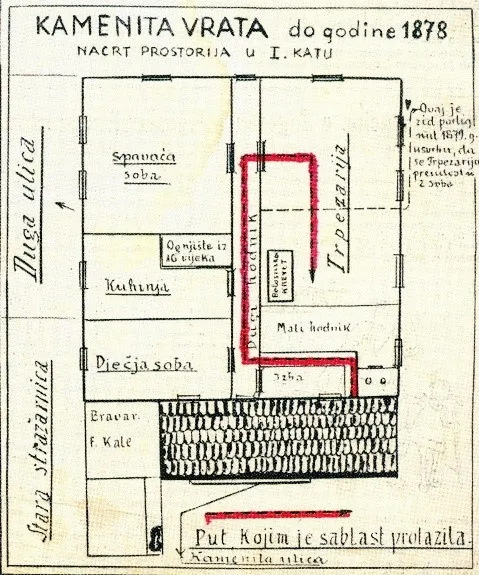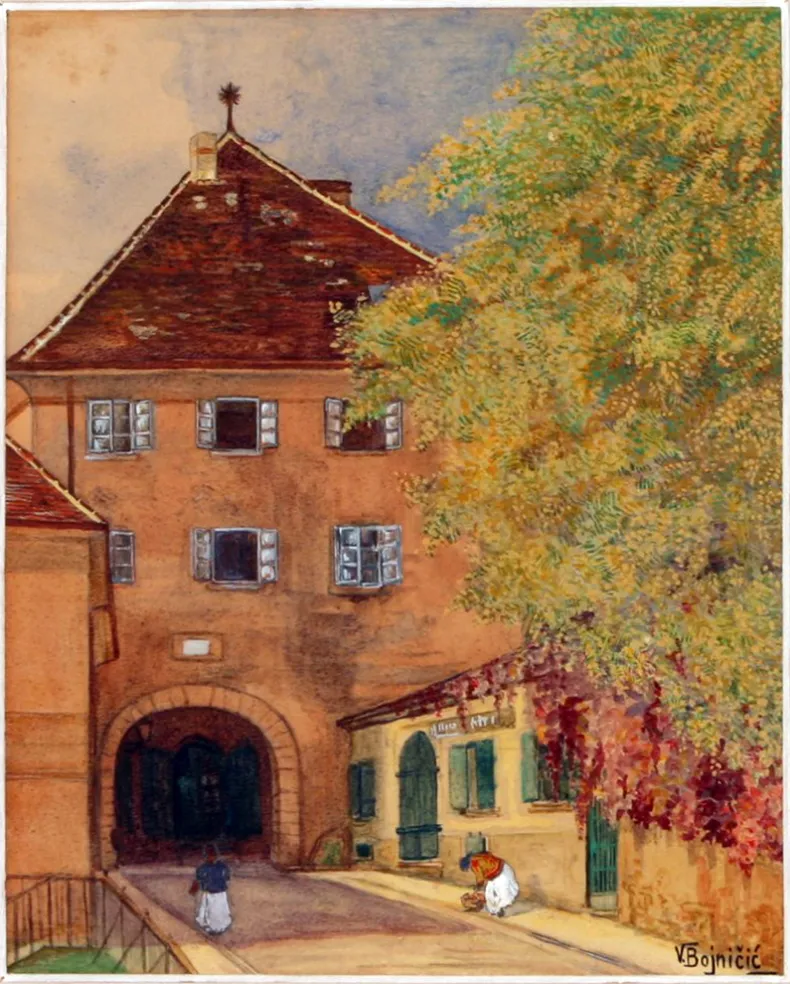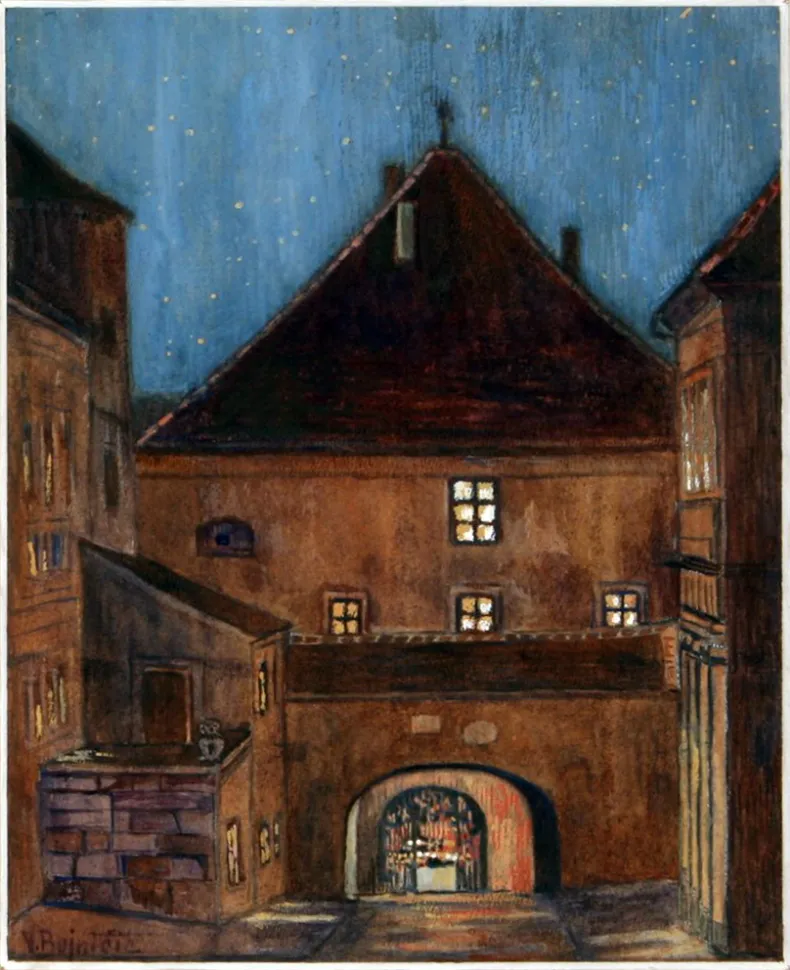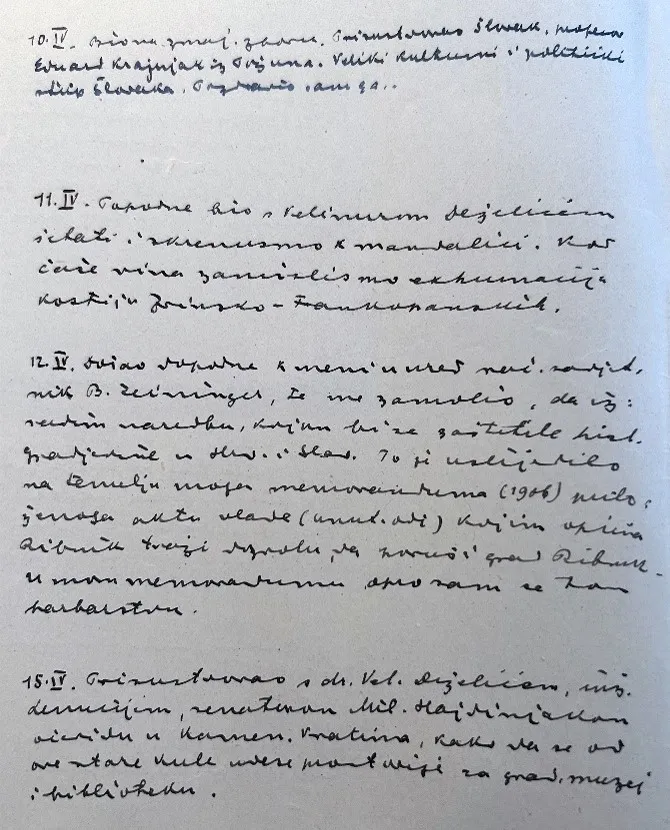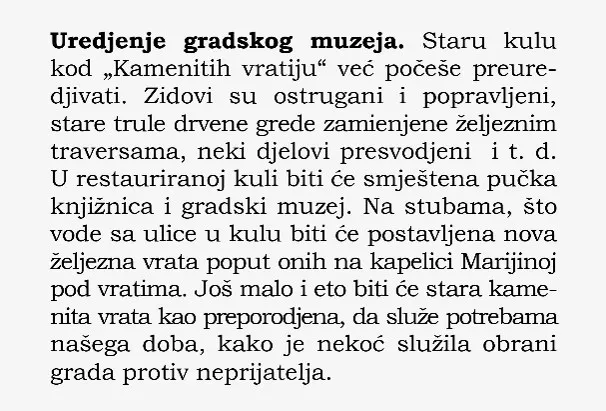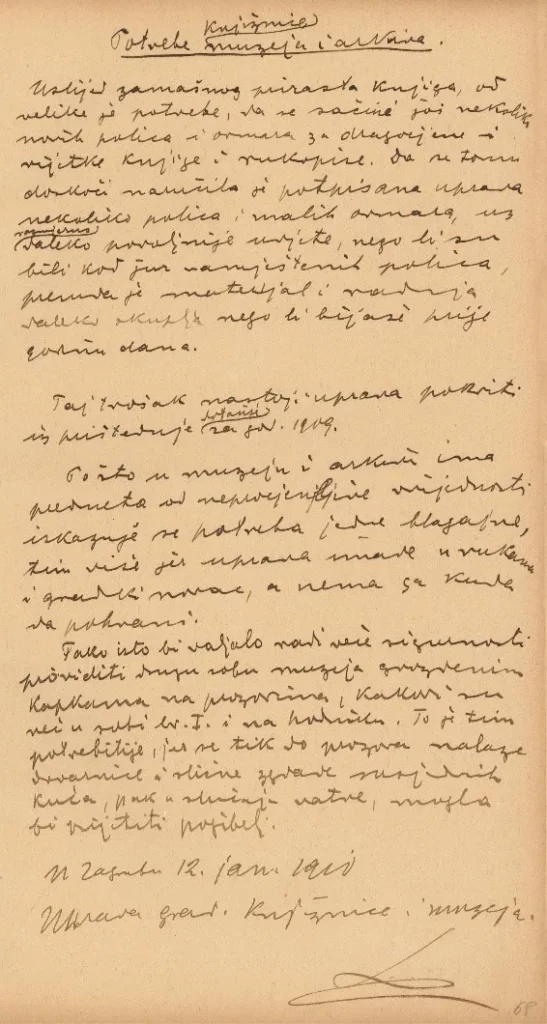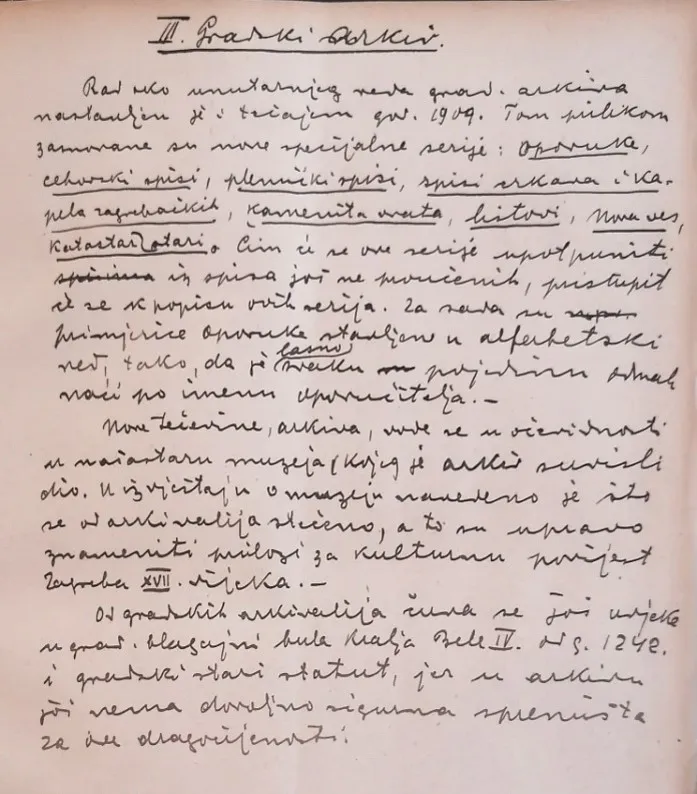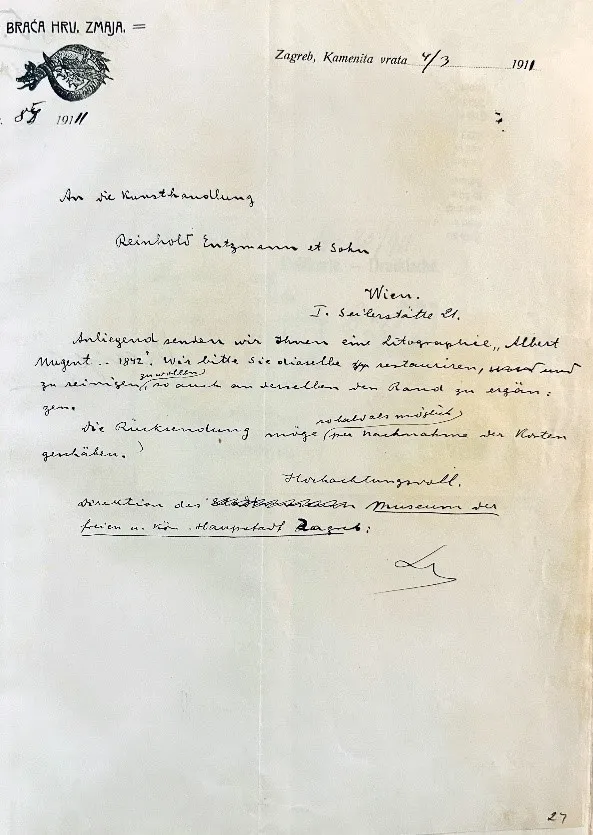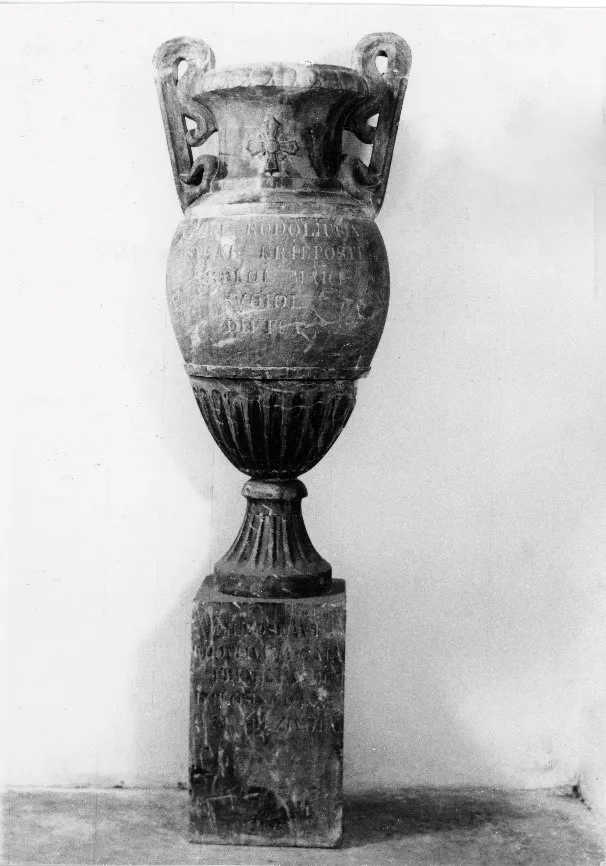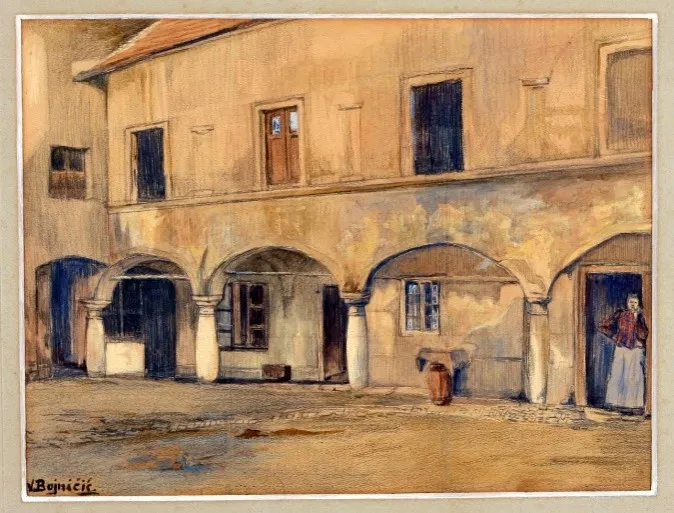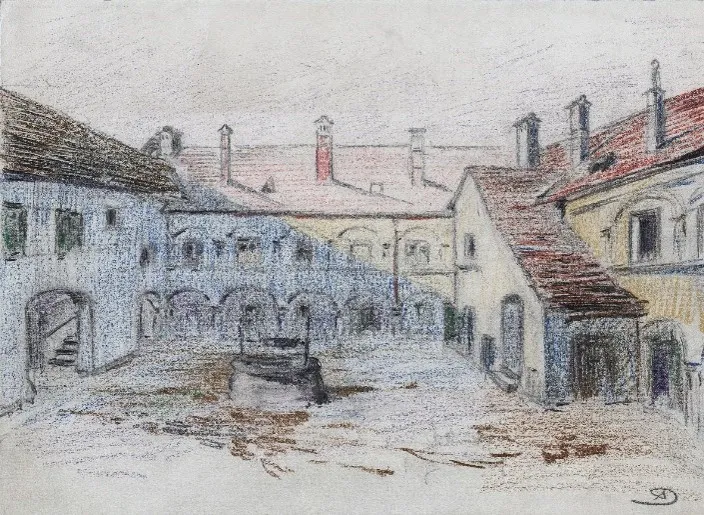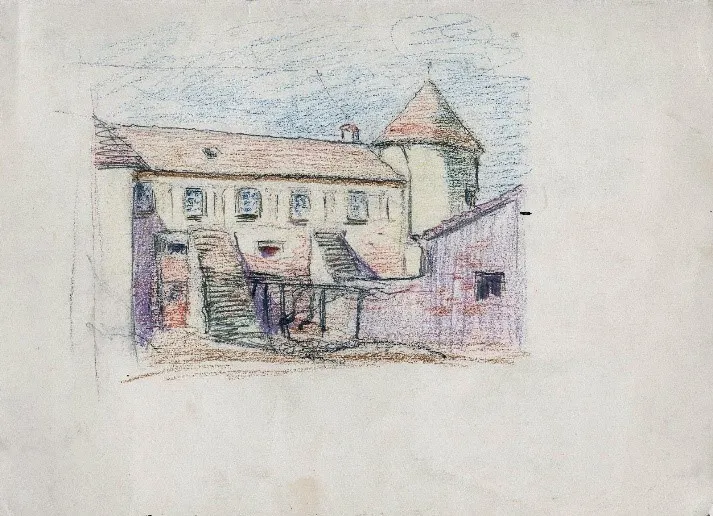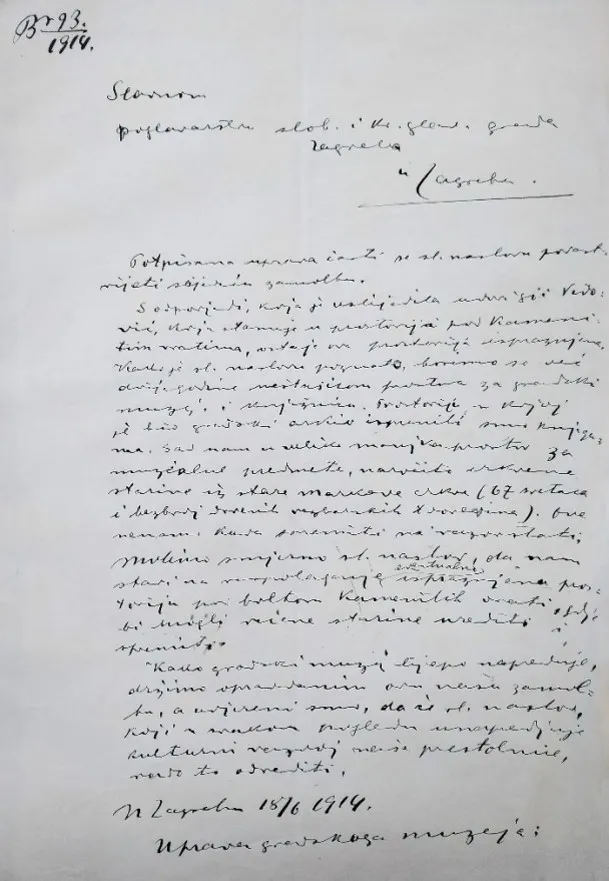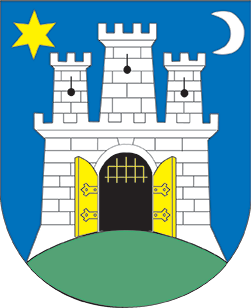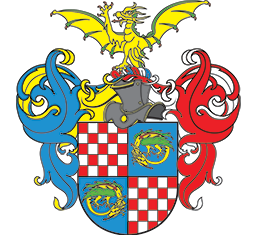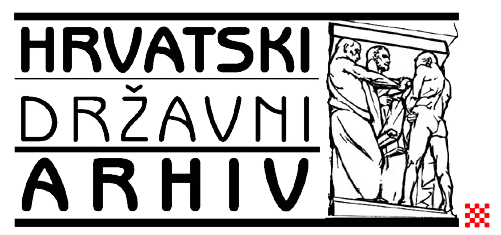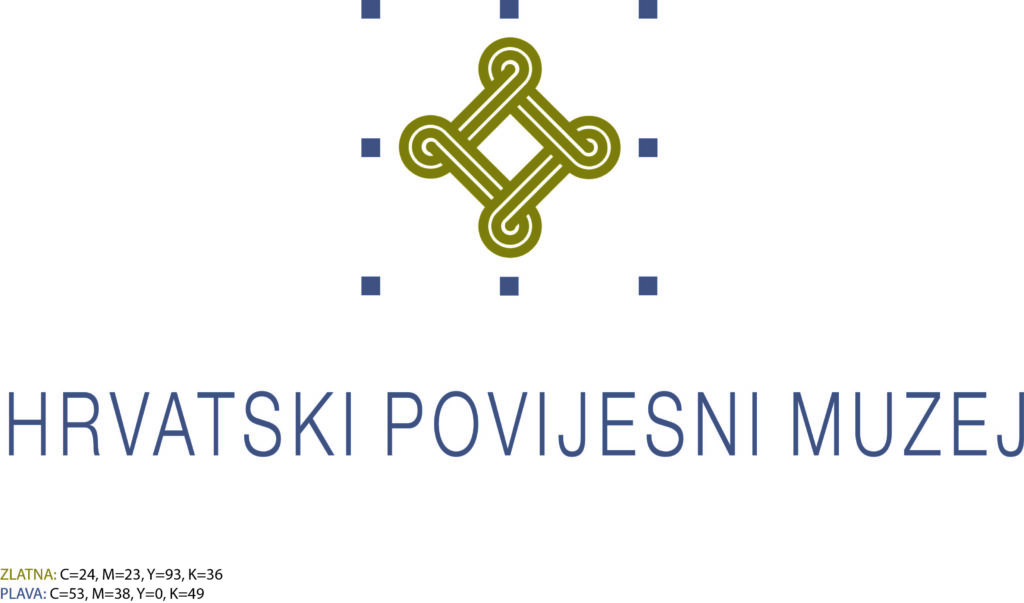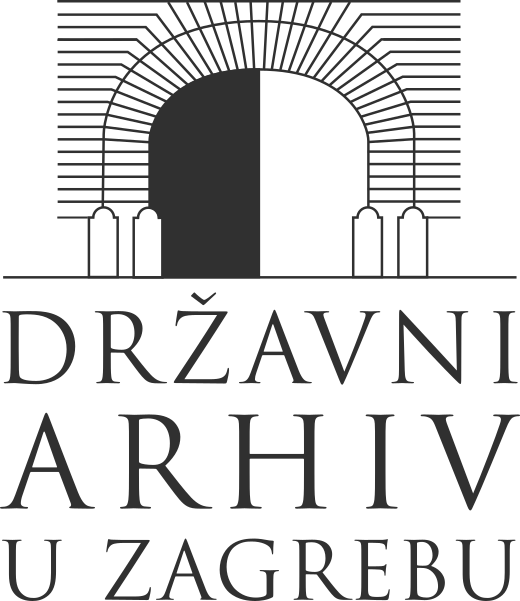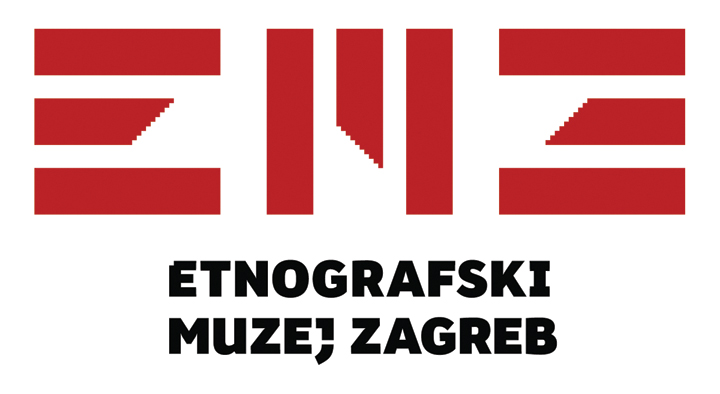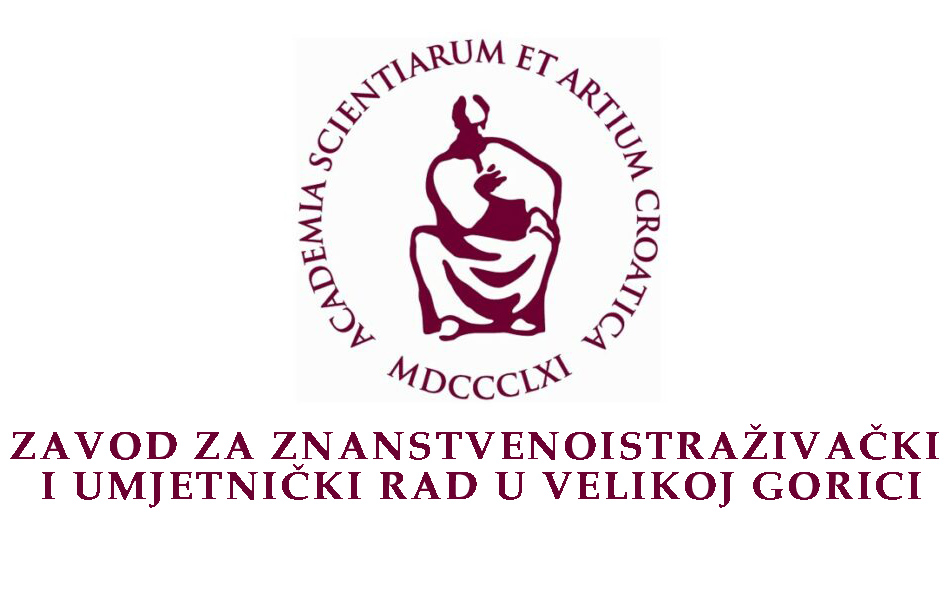7. How did I try to ensure the safety of objects and the museum building?
Establishing of the city museum, library and archive in 1907 was motivated by efforts to preserve a very important cultural and historical monument – the Stone Gate (Kamenita vrata). Throughout his life, Laszowski continuously and persistently took care of preservation, collection and protection of immovable and movable heritage and in seemingly impossible situations he searched for, found and proposed solutions. Taught by the experience surrounding demolition of Bakač tower, when a petition he wrote with Dr. Brunšmid failed to save the tower and the walls from demolition, in case of the Stone Gate he found a safer and more relevant solution: establishment of important city institutions in an area that was under threat of demolition!
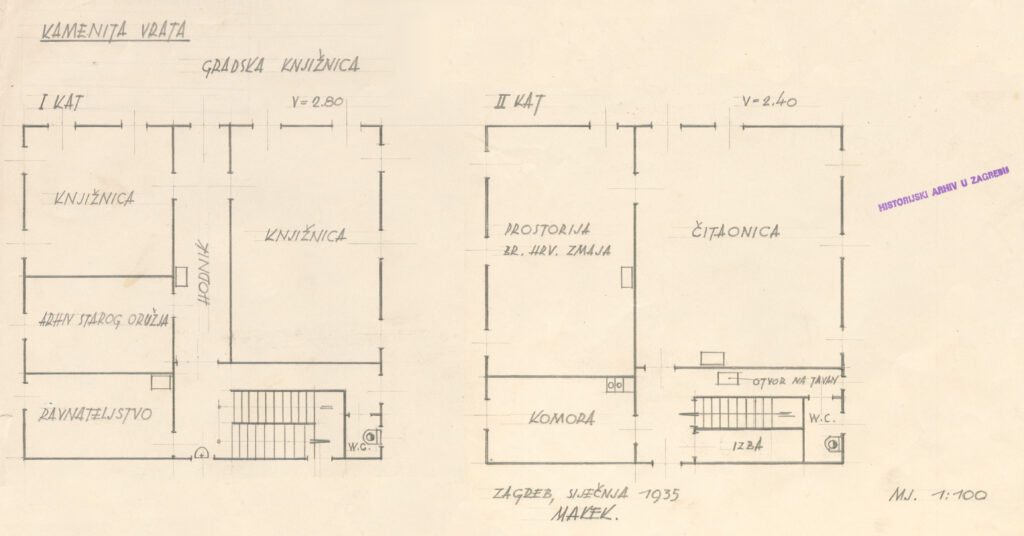
7.2: Floor plan of the Stone Gate Tower
Makek, January, 1935
DAZ
In 1907, when Laszowski took over the management of the museum before the “Brethren of the Croatian Dragon” Society, from the first visit to the tower until the end of remodelling, he regularly visited the premises that were being renovated. How much he cared about successful adaptation of the premises can be seen most clearly in the fact that he took care of it even when he was not in Zagreb. During his stay in Vienna in June 1907 in a letter, he asked Velimir Deželić to go and supervise the works on his behalf:
Let me know when you see the progress on the restoration of the stone door. It would not hurt to go over there with a prothonotary once in a while, and also examine where the furniture is being built, and to urge and supervise the work, because when it is finished, it will be too late to complain – and any repairs would then mean a delay in our work.
And when he travelled to Kostnica in August 1907, he wrote to him again:
Please, dear Velimir, resolve the following matter: How is the construction of the city library and museums progressing?
After adapting the premises and acquiring shelves, collected museum objects and books were delivered to the remodelled space, and in September 1907, the city archives were also transferred to the tower, which were saved by this deed.
Laszowski’s efforts regarding the design and security of the building and objects in the building did not cease even after the opening of the library and museum. In the regular work reports, Laszowski stated that in the rooms selected for the museum, the windows are protected from the inside with iron shutters, but not all of them. In efforts to carry out this preventative protection to the fullest extent, he points out that the danger of fire is great and that the fire could easily engulf museum, library and archival materials.
7.5: Page from the diary of Emilij Laszowski
Zagreb, 1907
15 April, I investigated the Stone Gate with Dr. Vel. Deželić, engineer Lenucius, senator Mil. Hajdinjak, to figure out how to design rooms in this old tower for the city museum and library.
HDA
7.6: Uređenje gradskog muzeja
Obzor, June 22, 1907
7.5: Page from the diary of Emilij Laszowski
Zagreb, 1907
15 April, I investigated the Stone Gate with Dr. Vel. Deželić, engineer Lenucius, senator Mil. Hajdinjak, to figure out how to design rooms in this old tower for the city museum and library.
HDA
7.6: Uređenje gradskog muzeja
Obzor, June 22, 1907
7.7: Concept report on the city museum and archive
E. Laszowski, 1908
… first, we had to dry the documents, which – due to them being stored in the basement of the town hall – were destroyed because of the humidity. Many writings perished like that, especially from the 18th century, because they were eaten away by the mould.
HDA
7.8: Concept report on the city museum and archives
E. Laszowski, 1909
Museum furniture as it was already designed in 1907, for now completely meets the needs, the only thing is that in time another smaller shelf for the archive will be needed. The windows of the museum are covered from the inside with iron shutters, as is the one in the corridor. It wouldn’t hurt if such shutters were installed on at least two more windows.
HDA
7.9: Concept report – needs of libraries, museums and archives
E. Laszowski, 1910
It would also be appropriate, for greater security, to equip the second room of the museum with iron shutters on windows, such as those that are already in room no. I. and in the hallway. This is all the more necessary, because there are woodsheds and similar facilities of neighbouring houses right next to the window, and in the event of a fire, it could be dangerous.
HDA
On January 1, 1909, in addition to the city museum and archive, Laszowski took over the leadership of the City Library in the tower above the Stone Gate. Given that Laszowski was now managing three institutions, in his reports he stated requirement for acquisition of cupboards and shelves for books, objects and archival records and the need for acquisition of a treasury, i.e. a safe for storing valuable items. Of all the objects that arrived, there were also objects that Laszowski did not take over for the museum. The stated objects were the Town Privileges from 1242 (Golden Bull) and the City Statute. He thought that those items had the greatest value for the history and culture of the City of Zagreb, and while taking great measures for their safety he did not remove them from the city treasury, until the conditions for their safe keeping were ensured, i.e. until the museum had safe enough storage for that valuableness. The treasury, which Laszowski requested, never arrived, and the Golden Bull is kept in the Croatian State Archives to this day. In order to ensure that the museum objects were safe and as well preserved as much as possible, Laszowski took a series of steps: he acquired picture frames, restored damaged objects, and sent the objects to Vienna for restoration.
7.10: Concept report III City archives
E. Laszowski, 1910
One of the city archives is still kept in the city treasury the Bull of King Bela IV from 1242 and the City’s old Statute, because there is still no safe enough storage for these valuables in the archives.
HDA
7.11: Replica of the Golden Bull in the permanent exhibition of the Zagreb City Museum
Photo by: Damir Fabijanić, 1998
MGZ
7.15: Laszowski’s letter to the Kunsthandlung Reinold Entzmann et Sohn from Vienna ordering restoration of a lithograph
Zagreb, March 4, 1911
HDA
In the 1910 report, Laszowski pointed out to the new mayor, Janko Holjac, that the library was so crowded with items, that books had to be placed on the floor, that the reading room space was only sufficient for a third of the interested users, and he expressed concern about the static safety of the space. Furthermore, he stated that the museum was overcrowded with objects, he again points out the danger of fire, but also the insufficient size of the space for exhibiting large objects such as, for example, flags. And for the first time, Laszowski presented the idea of constructing a new building to house these important institutions. Realising that the construction of a new building for the museum is almost impossible, Laszowski proposed that the Plemić House in Dolac (which was mistakenly believed to be the building of the former Cistercian monastery) is used to house these institutions. Negotiations and deals around Plemić’ House lasted for years, and in the end, the house was demolished, which Laszowski wrote about in Hrvatski zmaj in 1925.
In April 1912, Laszowski sent a letter to the Mayor Janko Holjac stating that collection and preservation of heritage was impossible due to limited space and proposed a new housing solution for the city library and museum: Countess Buratti’s house on the St. Catherine’s Square. When even that idea of moving the city institutions was not implemented, after the ground-floor rooms of the Stone Gate Tower were emptied in June 1914, Laszowski sent a request to the City Administration to allocate the rooms to the City Museum in order to organise and house the antiquities from the old St. Mark’s Church. However, he soon received an answer that the premises had already been assigned to the Parish of St. Mark.
7.20: Draft letter to the Head of Administration about problems with the premises of the City Library and Museum
Zagreb, October 1, 1910
If our glorious ancient City of Zagreb wanted to sacrifice something for its antiquities and its library, we would first of all point to the building of the former Cistercian monastery in Dolac. That would provide enough space for a library, museum and archives, and it could also accommodate a handyman as a guard, as is the case elsewhere.
HDA
Premises for the museum were shortly disburdened in 1914, when the city archives were separated from the premises above the Stone Gate. However, there were still books from the library in the museum premises, and the tour of the museum could still be realized only upon announcement and supervision of the manager. The overcrowded space of the City Library and Museum, as well as the World War I and the economic circumstances associated with the war, affected the work of the museum – acquisitions of the museum decreased, and visitations were still difficult.
The City Museum did not get the desired and requested larger space until 1925. That year, great Cultural and Historical Exhibition of the City of Zagreb was organised on the occasion of celebration of the millennial anniversary of the Kingdom of Croatia 925 – 1925, which was held in the Art Pavilion from October 11 to November 22. For the purposes of that exhibition, a large number of objects from the tower above the Stone Gate were transferred to the Art Pavilion. The held exhibition served as an incentive to keep the objects collected for the exhibition as a gift or purchase at the City Museum, for the City Administration to take over the management of the Museum and place it temporarily at the lower premises of the Art Pavilion. Prof. Gjuro Szabo, became director of the Museum, who continued the battle for the new location of the Zagreb City Museum with the same zeal and persistence.


